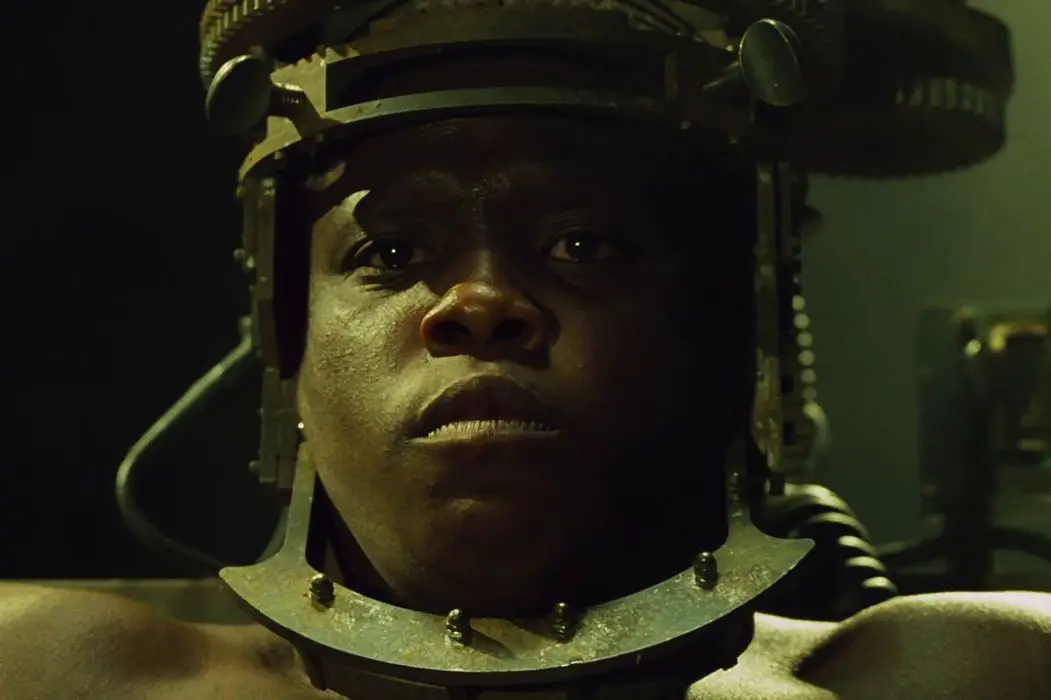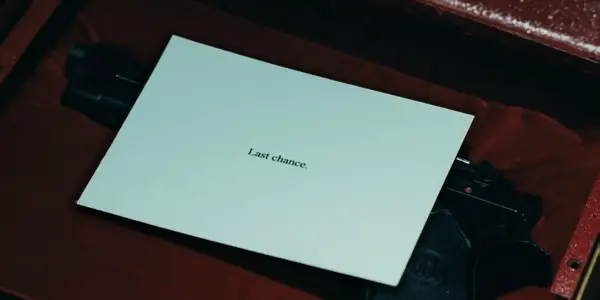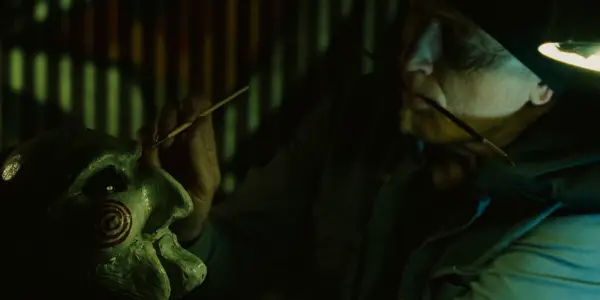SAW III: Too Many Flaws To Warrant Forgiveness

From a young age, I was drawn to films especially…
With Saw. Every week, I’ll be watching and reviewing the respective film in chronological order. For this week, let’s revisit the controversial Saw III.
Trilogies – they aren’t easy to wrap up and with two enjoyable and decent films, Saw III is the film that tried to close it out. Typically, the final film in a trilogy tries to go for more. More kills, more blood, more twists, more, more, more. However, even with more, Saw III isn’t the most liked of the franchise, considered either one of the worst or one of the best. The problem doesn’t come from the fact Saw III wants to end this trilogy with a bang, it comes from its inability to balance it all.
Jigsaw (Tobin Bell) is being cared for by his new accomplice, Amanda (Shawnee Smith). As his condition is worsening, she kidnaps brain surgeon, Dr. Denlon (Bahar Soomekh), to do the job. Attached to her neck is an explosive device connected to Jigsaw’s heart rate. If by any chance he dies, she dies as well. Dr. Denlon’s task is quite simple to keep Jigsaw alive until, Jeff (Angus Macfadyen), another victim has completed his own test. What they don’t know is that the mastermind has a bigger sinister plan in mind.
Gore, Blood, And More Gore
Saw III‘s best element is by far its practical effects. As more money is given to these films, the third entry gets to have more practical effects and therefore more blood and gore. The practical effects in Saw III exceed the quality of the first two and the film wants to showcase it to the audience. For example, there is a brain operation scene where the nurse drills holes into Jigsaw’s cranium and while it’s obviously there to disgust you, it achieves its goal with all around impressive practical effects.

Gore is definitely a big part of Saw III and it utilizes it quite well. In III, the gore is used mostly in the torture storyline which continues to be the most interesting part of this franchise. We are to feel for our main character as he goes through each test and while it isn’t as emotional it could have been, it’s a decent study of grief, even when it feels a bit over the top. The driving force of this storyline also continues to be the anticipation of our character’s decisions which is interesting and captivating.
Uninspired Camera And Score
Terrible cinematography and uninspired score continue to plague the Saw films. While it wasn’t the case with the first Saw, Saw II was a plain technical misfire and III continues that trend. There’s a lot of blurry shots that make it hard to see what’s happening on screen. A lot of the times, it’s purposely made to hide the pure mediocrity, whether acting, action or torture, on screen.
The score continues to be a problem here as well. Bousman over relies on the Saw theme, and it’s becoming a trope. Every time there is an intense moment or at the climax, he will cue the theme, and while it is a good theme, it’s overexposed at this point.
However, it doesn’t end there. The score is always used to accentuate important elements or highlight potential threats in an obnoxious way. It just fulfills the bare minimum of a what a score can do and seems very uninspired compared to the first one. In terms of filmmaking, Saw III is very by the numbers and not very unique, never thinking outside the box.
Going Too Far
Where Saw III is thinking out of the box is the exact place it shouldn’t. Going for a more intricate setting than the last, the third film goes back and forth between reality and fantasy. Some of the “tests” are really out there and would have certainly taken time and money to create. Yet, III doesn’t really acknowledge it and would rather you don’t think about it. I mean, how many places can Jigsaw realistically have?

Just like its setting, III follows the rules of the trilogy going for more and more they do go. The final twist is inevitable and it wants to go bigger. It’s built mostly on convenience and stupid decisions which make it the sloppier twist thus far. It uses our characters’ stupid decisions to fuel more and more twist to the point of where I was rolling my eyes.
The Battle Between Revenge And Forgiveness
No Saw film is complete without its Christian themes and Saw III‘s main concept comes from a battle between revenge and forgiveness. Our main character is constantly faced with two options – dwell on the past or bring a new start. With this very Christian understanding, Saw III is able to subvert many Christian themes and symbolism which is fascinating. A perfect example of the film subverting Christian symbolism comes when the father is face to face with the killer of his child.
He’s nailed down to a cross, symbolizing Jesus, and the father is faced with a decision to forgive or not. If he chooses revenge, his legs, arms, and head will twist until they break thus killing him. It’s a subversion of the popular Christian concept where instead of the righteous one up on the cross, this time it’s the guilty party. Killing him will not offer salvation instead it will only make matters worse. As you can see, it’s a total subversion of Jesus’ crucifixion.

However, it’s not only our main character who is constantly in dilemma. Saw III has a similar dilemma where it battles between flirting with past success or moving on to other things. III wants to explore the relationship between Amanda and Jigsaw but it doesn’t want to let go to the formula of the second. It offers up a torture storyline as well, unable to explore both stories with the depth they warrant. Even when they try to connect each storyline, it doesn’t work as well as the first or second. It feels self-defeating for a movie trying to deliver a message of forgiveness in a film unable to move on from the past. Overall, it’s a rather compelling theme that gets lost in the mix of it all.
Saw III: Conclusion
All in all, Saw III just misses the mark. Its careless nature and its drive to go bigger doesn’t consistently lead to better things. Its once compelling twists have now become overdone and are not as shocking as they once were. To give it credit, there are some redeeming qualities, such as the theme and its practical effects, but overall, it’s a disappointing wrap up to an otherwise decent horror trilogy.
Where would you rank Saw III among the others of the franchise?
Saw III came out in theatres in 2006.
Does content like this matter to you?
Become a Member and support film journalism. Unlock access to all of Film Inquiry`s great articles. Join a community of like-minded readers who are passionate about cinema - get access to our private members Network, give back to independent filmmakers, and more.
From a young age, I was drawn to films especially the horror and psychological thriller genre. Living in a small town in New Brunswick, Canada, I later fell in love with reviewing and writing about movies. I like to bring my background in Psychology and Religious Studies to my writing and film reviews. Apart from films, I enjoy writing and drawing. However, nothing makes me happier than celebrating Halloween and playing tennis.












